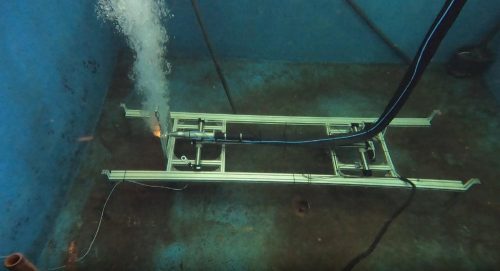BASF offers Product Carbon Footprints for ingredients portfolio in human and animal nutrition markets
Product Carbon Footprints (PCFs) for vitamins, carotenoids, beverage processing polymers, feed enzymes and feed performance ingredients now available upon customer request – methodology certified according to international standard
PCFs for specific vitamin A and E products at least 20 % better than global market average
BASF Verbund leading to a highly efficient use of resources
BASF investments in green energy expected to further reduce PCFs in future and support customers emission reduction targets
BASF has calculated the Product Carbon Footprints (PCFs) for vitamins, carotenoids, beverage processing polymers, feed enzymes and feed performance ingredients for the human and animal nutrition markets.1 The BASF methodology for calculating PCFs is certified by TÜV Rheinland according to the internationally recognized standard, ISO 14067:2018.
The PCF sums up the total greenhouse gas emissions generated by a product over the different stages of its life cycle. This makes PCFs the central tool for creating transparency on emissions and identifying levers to reduce CO2 emissions. PCFs of BASF products comprise all product-related greenhouse gas emissions that occur until the BASF product leaves the factory gate for the customer: from the purchased raw material to the use of energy in production processes.
A benchmarking shows that the PCF for specific BASF vitamin A and E products is significantly better – at least 20 % – than the global market average PCF of the corresponding third-party products.2 BASF’s benchmark assessments have been conducted according to ISO 14044, ISO 14067, and GHG protocol standard. The independent certification by TÜV Rheinland confirms calculation of the PCFs and market averages according to ISO 14067:2018, based on data provided by BASF. The certification is documented in a database (www.certipedia.com) and accessible to every customer upon request.
BASF conducted the benchmarks for specific vitamin A and E products as they show a high CO2 avoidance potential for customers. BASF will evaluate an expansion of this approach to further products in its vitamin and carotenoid portfolio. A major factor contributing to the lower PCF of the respective products is the unique BASF Verbund: highly efficient use of resources as well as lower carbon-emitting energy sources and raw materials.
BASF’s goal is to maintain this competitive PCF advantage in the future. Recent investments in a world-scale wind farm, long-term renewable Power Purchase Agreements, and strategic partnerships on industrial-scale heat pumps will enable sizeable emissions reductions.
“We are committed to support our customers to progress on their emission reduction targets. Our offer of specific vitamin A and E products with certified product carbon footprint better than the global market average is outstanding and we are proud to deliver this competitive PCF advantage to our customers,” says Julia Raquet, Senior Vice President Global Business Unit Nutrition Ingredients.
The following BASF products have PCFs at least 20 % better than global market average:
Animal Nutrition:
Lutavit® A 1000 NXT
Lutavit® E 50
Human Nutrition:
Vitamin AP 1,7 TOC
Vitamin E Acetate 98% and DL-alpha-Tocopherol
BASF is committed to the introduction of product-specific guidelines for the calculation of PCFs in the chemical industry to create an industry-wide level playing field and comparability of products.
1 BASF’s product carbon footprint (PCF) calculations follow the requirements and guidance given by ISO 14067:2018. In a methodology review, TÜV Rheinland has confirmed that the PCF (SCOTT) methodology developed and used by BASF SE is scientifically based, is in accordance with ISO 14067:2018, and reflects the state of the art (ID-Nr. 0000080389: BASF SE -Certipedia). Excluded from calculations are Monoglycerides, Mycotoxin binders and Natural Beta Carotene.
2 The referenced PCF comparison is based on BASF’s assessments and estimations of PCFs of all major manufacturers of the respective products using publicly available information on production routes and deployed raw materials as well as its own market and technology know-how. The market-wide global averages are based on estimated name-plate capacities excluding BASF. In 2022, all vitamin A producers faced extraordinary challenges: e.g. unplanned, extended plant overhauls, disruptions in operations, weak demand, low plant utilization. In the benchmark it was assumed that these negatively impacted PCFs of all producers in a comparable order of magnitude, and this was taken into account in the assessment. The applied methodologies are the same as for the calculation of the PCF of the respective BASF products. Benchmark is valid for 3 years unless an earlier review is needed due to major changes in assumptions or data.
About BASF’s Nutrition & Health division
BASF Nutrition & Health provides a comprehensive product and service range for human and animal nutrition, pharmaceutical, and flavor & fragrance industries. With our science-driven portfolio, we address customers in globally growing markets to meet the demands of an expanding world population. Together with our customers, we play an active role in enhancing the nutrition, health and wellbeing of consumers all over the world. Our products fulfill the highest safety, regulatory and sustainability standards. BASF Nutrition & Health operates sites in Europe, North America and in Asia-Pacific. For more information, go to www.basf.com.
At BASF, we create chemistry for a sustainable future. We combine economic success with environmental protection and social responsibility. More than 111,000 employees in the BASF Group contribute to the success of our customers in nearly all sectors and almost every country in the world. Our portfolio comprises six segments: Chemicals, Materials, Industrial Solutions, Surface Technologies, Nutrition & Care and Agricultural Solutions. BASF generated sales of €87.3 billion in 2022. BASF shares are traded on the stock exchange in Frankfurt (BAS) and as American Depositary Receipts (BASFY) in the United States. Further information at www.basf.com.
BASF SE
Carl-Bosch-Straße 38
67056 Ludwigshafen
Telefon: +49 (621) 60-0
Telefax: +49 (621) 60-42525
http://www.basf-ag.de
Global Communications Nutrition & Health
Telefon: +49 (621) 60-76322
E-Mail: sandra.dierkes@basf.com
![]()




